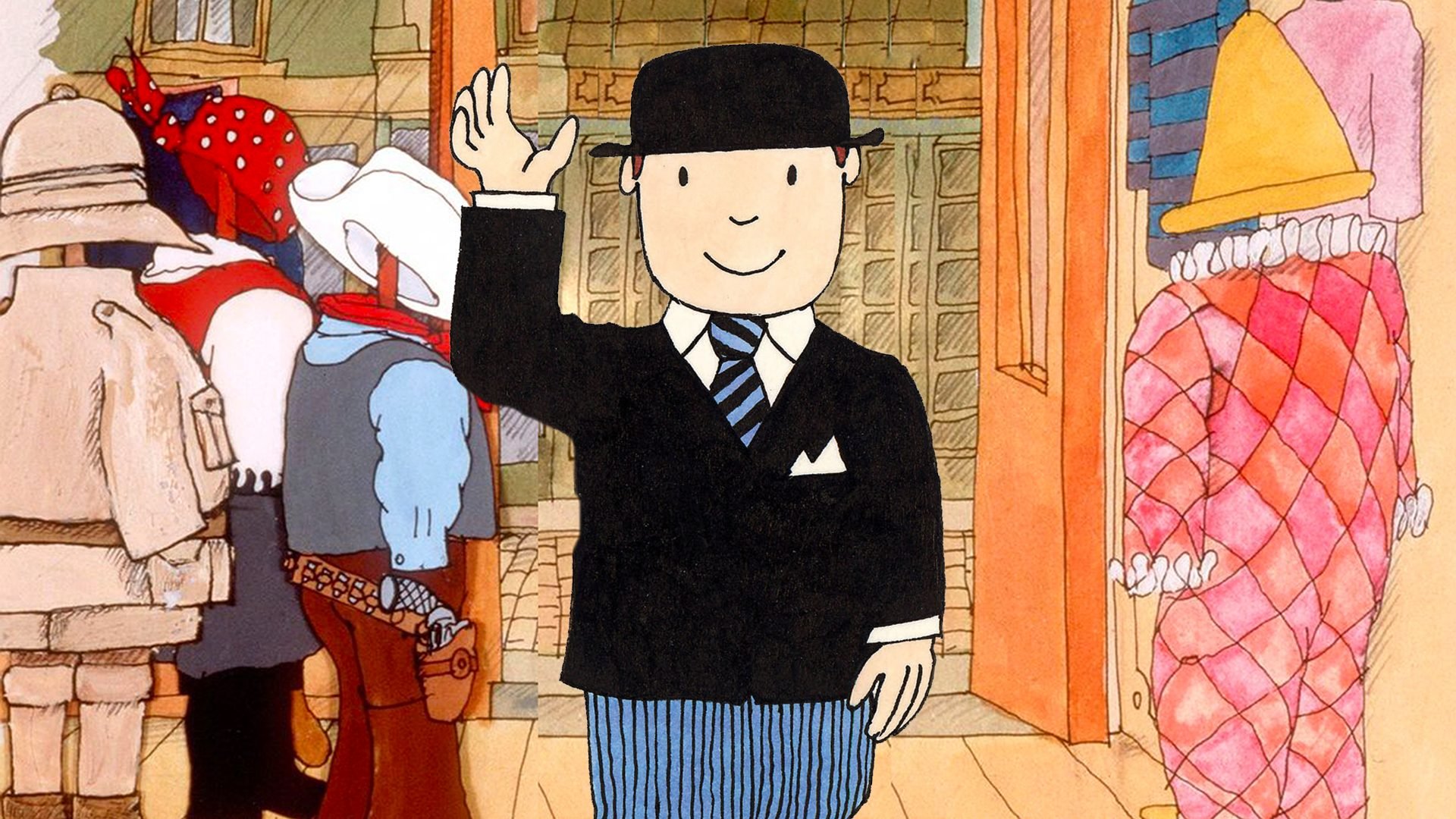Like most British kids born in the seventies, I loved Mr Benn, so I was sad to read that his creator, David McKee, has died at the age of 87.
According to one obituary, David attributed the popularity of Mr Benn to children’s liking for the same story repeated: “It’s security, they know what’s coming next”.
With Mr Benn we always knew exactly what was coming next. The walk down Festive Road in his suit, tie and bowler hat. The visit to the fancy-dress shop. The appearance “as if by magic” of the shopkeeper.
On it went through the episode, the familiar structure wrapping a completely new adventure. Every episode the same but different. The same but different. The key to a great campaign.
Because it’s not only children who like to know what’s coming next.
It’s why the first episode of a new sitcom is never as enjoyable as the twenty-first.
It’s why we started every Warburtons ad with “Mr Warburton, there’s a Mr Stallone /Mr The Frog / Mr Kay / Mr De Niro here to see you…”
It’s why Stella Artois’s Reassuringly Expensive campaign, with the Jean de Florette setting and theme music is still the most effective beer campaign of all time (see IPA Effectiveness case study bank).
It’s why millions more people will be able to tell you the Specsavers strapline than whatever strapline Vodafone has chosen this week.
And it’s why every third film on TikTok is following a pre-established meme, from the set dance routines to the people playing pots and pans strapped to their bodies to the patient ping-pong-ball-chuckers.
Originality is the lifeblood of our industry, so it’s no surprise there’s always a rush to throw things away and start from scratch.
But if you want to create something famous, memorable, enduring, David McKee’s example is a good one to follow: make something the same but different.
Guns, Butter and the new Avon campaign.
One of the first things you learn in economics is the guns and butter model, in which a national economy is simplified down to producing just two things: guns and butter. The point of the model is to demonstrate that economic choices have consequences. You can choose to produce different combinations of guns and butter, but once you’re on the production possibility frontier (the curve in the diagram below) then however much you might wish for it, you can’t have both more guns AND more butter.
The same is true of communications - you simply can’t have more of everything. Every additional fact, line of voiceover, logo, corporate end-device or super dilutes the power of the messages already present. But here’s the thing: while the finite capacities of factories prevent us from thinking we can have more of both guns and butter, in the world of advertising no such restrictions apply. We can kid ourselves that we can have more of everything, ignoring the fact that the chaotic barrage we’ve thrown out into the world is too much for the human brain to decode, to absorb, to remember.
The new Avon campaign is an interesting case in point. It wants to encourage reappraisal of the Avon brand and to attract a younger audience. It’s an extraordinary brand - well over a century old - and it has some striking facts with which to set about the reappraisal task:
Avon has been granted over 1,000 patents
Avon has won 300 awards in the last three years
Avon helps tackle gender violence in over 40 countries
Avon has donated over $1bn to causes
Avon has a global network of over 5m women
Avon has been supporting women since 1886
Avon are pioneers in skincare
Avon has the world’s best selling fragrance brand
Avon was the first global beauty brand to end animal testing.
Some of these facts are the kind of nuggets that strategic planners dream of. The hard facts on which famous, emotional campaigns and IPA Effectiveness Papers are founded. But - just as with guns and butter - a choice is necessary. For a new campaign to be about something, it really can’t be about everything.
So which of these facts has Avon chosen to include in its new brand film? Every single one. They appear as large titles on top of a film that seems to be about something else entirely. The voiceover and images celebrate inspirational women - and match up nicely - but the titles seem like a late, incongruous addition. For example, the question ‘who has donated over $1bn to causes?’ is written across an image of two women enjoying a fairground ride as the voiceover says “I am the fifty year old who doesn’t feel a day over thirty”. The result is almost like watching two films in one go. See what you think by watching the film here:
New brand campaigns often start this way. Most reappraisal projects begin with a deep dive into the brand, rooting out lots of key facts and hidden strengths. And once you have that nice long list, it’s only natural to want the world to know about all of them. I suspect the best work in this campaign will emerge when the dust has settled on the big brand relaunch. Avon has found an active, contemporary-sounding new campaign line in ‘Watch Me Now’ and if the company backs this up with some big, bold, real-world actions, there’s no reason to think a new generation of Avon customers can’t be persuaded. But only if, when the next campaign materials are reviewed, the request is not to add both more guns and more butter.



